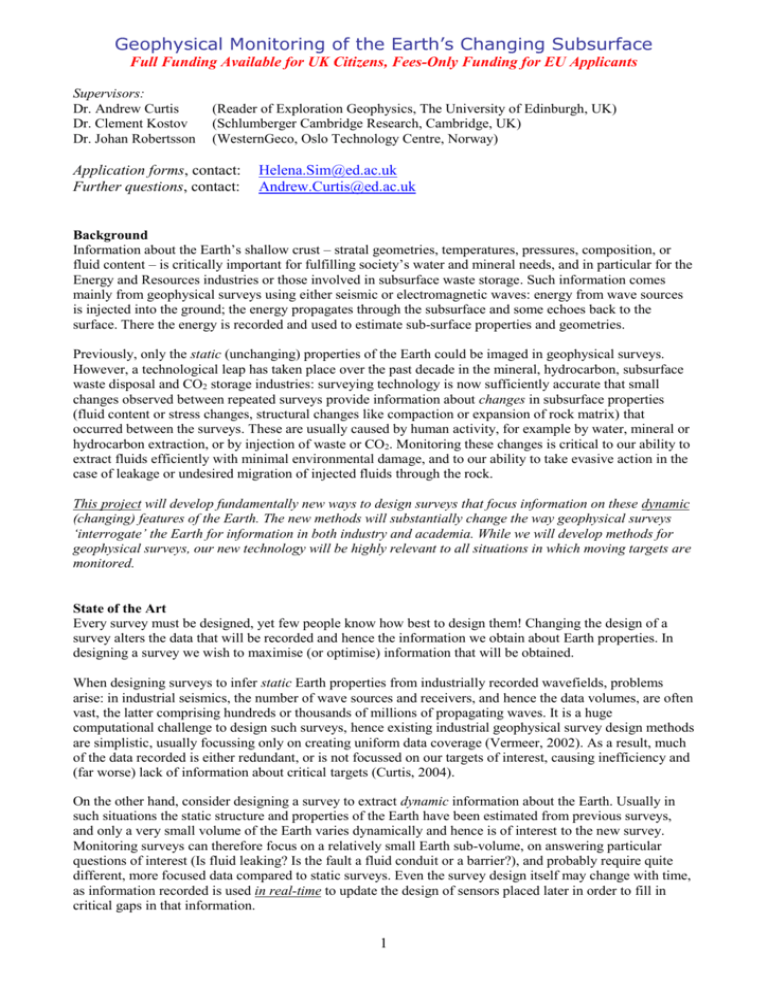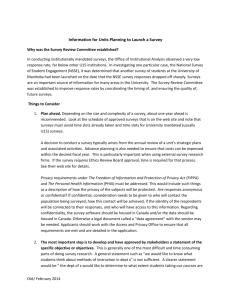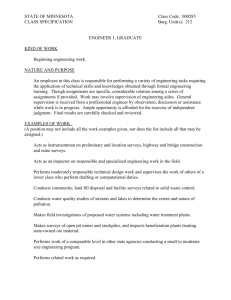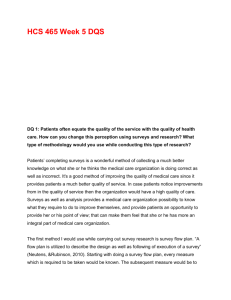Sub-surface models of the UK and European lithosphere from
advertisement

Geophysical Monitoring of the Earth’s Changing Subsurface Full Funding Available for UK Citizens, Fees-Only Funding for EU Applicants Supervisors: Dr. Andrew Curtis Dr. Clement Kostov Dr. Johan Robertsson (Reader of Exploration Geophysics, The University of Edinburgh, UK) (Schlumberger Cambridge Research, Cambridge, UK) (WesternGeco, Oslo Technology Centre, Norway) Application forms, contact: Further questions, contact: Helena.Sim@ed.ac.uk Andrew.Curtis@ed.ac.uk Background Information about the Earth’s shallow crust – stratal geometries, temperatures, pressures, composition, or fluid content – is critically important for fulfilling society’s water and mineral needs, and in particular for the Energy and Resources industries or those involved in subsurface waste storage. Such information comes mainly from geophysical surveys using either seismic or electromagnetic waves: energy from wave sources is injected into the ground; the energy propagates through the subsurface and some echoes back to the surface. There the energy is recorded and used to estimate sub-surface properties and geometries. Previously, only the static (unchanging) properties of the Earth could be imaged in geophysical surveys. However, a technological leap has taken place over the past decade in the mineral, hydrocarbon, subsurface waste disposal and CO2 storage industries: surveying technology is now sufficiently accurate that small changes observed between repeated surveys provide information about changes in subsurface properties (fluid content or stress changes, structural changes like compaction or expansion of rock matrix) that occurred between the surveys. These are usually caused by human activity, for example by water, mineral or hydrocarbon extraction, or by injection of waste or CO2. Monitoring these changes is critical to our ability to extract fluids efficiently with minimal environmental damage, and to our ability to take evasive action in the case of leakage or undesired migration of injected fluids through the rock. This project will develop fundamentally new ways to design surveys that focus information on these dynamic (changing) features of the Earth. The new methods will substantially change the way geophysical surveys ‘interrogate’ the Earth for information in both industry and academia. While we will develop methods for geophysical surveys, our new technology will be highly relevant to all situations in which moving targets are monitored. State of the Art Every survey must be designed, yet few people know how best to design them! Changing the design of a survey alters the data that will be recorded and hence the information we obtain about Earth properties. In designing a survey we wish to maximise (or optimise) information that will be obtained. When designing surveys to infer static Earth properties from industrially recorded wavefields, problems arise: in industrial seismics, the number of wave sources and receivers, and hence the data volumes, are often vast, the latter comprising hundreds or thousands of millions of propagating waves. It is a huge computational challenge to design such surveys, hence existing industrial geophysical survey design methods are simplistic, usually focussing only on creating uniform data coverage (Vermeer, 2002). As a result, much of the data recorded is either redundant, or is not focussed on our targets of interest, causing inefficiency and (far worse) lack of information about critical targets (Curtis, 2004). On the other hand, consider designing a survey to extract dynamic information about the Earth. Usually in such situations the static structure and properties of the Earth have been estimated from previous surveys, and only a very small volume of the Earth varies dynamically and hence is of interest to the new survey. Monitoring surveys can therefore focus on a relatively small Earth sub-volume, on answering particular questions of interest (Is fluid leaking? Is the fault a fluid conduit or a barrier?), and probably require quite different, more focused data compared to static surveys. Even the survey design itself may change with time, as information recorded is used in real-time to update the design of sensors placed later in order to fill in critical gaps in that information. 1 The Project This project will create novel methods to design surveys that focus information on dynamic properties of the Earth. This will build on and ultimately quite change existing experimental design (ED) methods, and we will test them with real field data. The Industrial CASE partners Schlumberger and WesternGeco (a Schlumberger subsidiary) constitute the largest Oilfield Services company in the world, employing 45,000 people worldwide. They will provide data, and help train the student to run field tests of the new methods. The student may also transfer the methods into industrial development within Schlumberger, thus gaining valuable experience of an industrial Research and Development organization. The student will develop a suite of survey design tools that will be sufficiently general to be adapted to design any survey of dynamic phenomena using wave-based methods, provided sufficient computational power is available. Hence, this project addresses the fundamentally important and relatively new area of time-dependent monitoring of industrial geophysical subsurface targets, providing excellent training and preparation of the student for employment or for further study. It also allows these extremely expensive surveys to be conducted in an efficient and robust manner, providing critical information for planning and taking evasive action. The resulting improvements in mineral and hydrocarbon industrial efficiency, and reductions in potentially environmentally damaging escapes of stored fluid from subsurface traps, will be of significant benefit to society. The student will be trained in all necessary theory in the host and the CASE partner departments, and will take courses in high performance computing (HPC) at the Edinburgh Parallel Computing Centre – having access to HPC facilities there and across the UK computing grid. S/he will make extended visits to the Industrial CASE partners in Cambridge (UK) and Oslo (Norway). These research laboratories are internationally respected, with expertise in industrial monitoring that is unrivalled throughout Europe. The recent joint appointment of Dr. Curtis (supervisor) between the University and Industrial CASE partner creates a seamless interface between the two institutions, ensuring a degree of closeness in the collaboration that is not usually afforded by other joint academic-industrial projects. Schlumberger Cambridge Research is part of one of the largest and leading industrial research organisations in the Earth Sciences. The student will benefit from company-internal training, and from contacts with world-class scientists from many different disciplines. S/he will also present talks at national and international conferences, providing an excellent basis for a career in most fields to which science and society are relevant. Skills Required Applicants should have a background in geophysics, mathematics, statistics, physics, engineering, or similar. Ability to program is preferred but is not essential, as this skill will be honed during the project. References: Curtis, A., 2004, The Leading Edge, Vol. 23, No. 10, pp. 997-1004 (www.geos.ed.ac.uk/homes/acurtis). Vermeer, G.J.O., 2002, 3-D seismic survey design, Society of Exploration Geophysicists. 2








